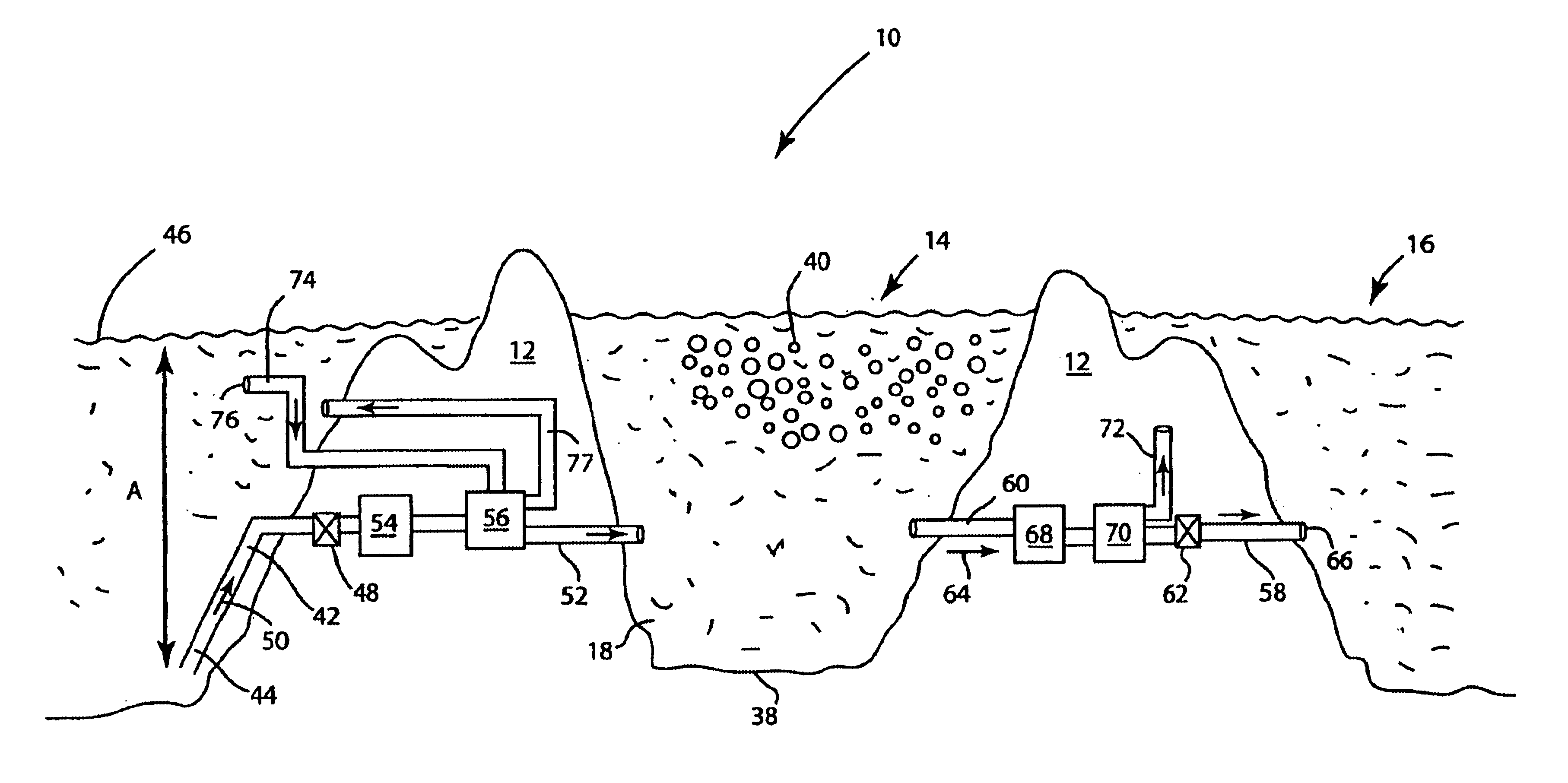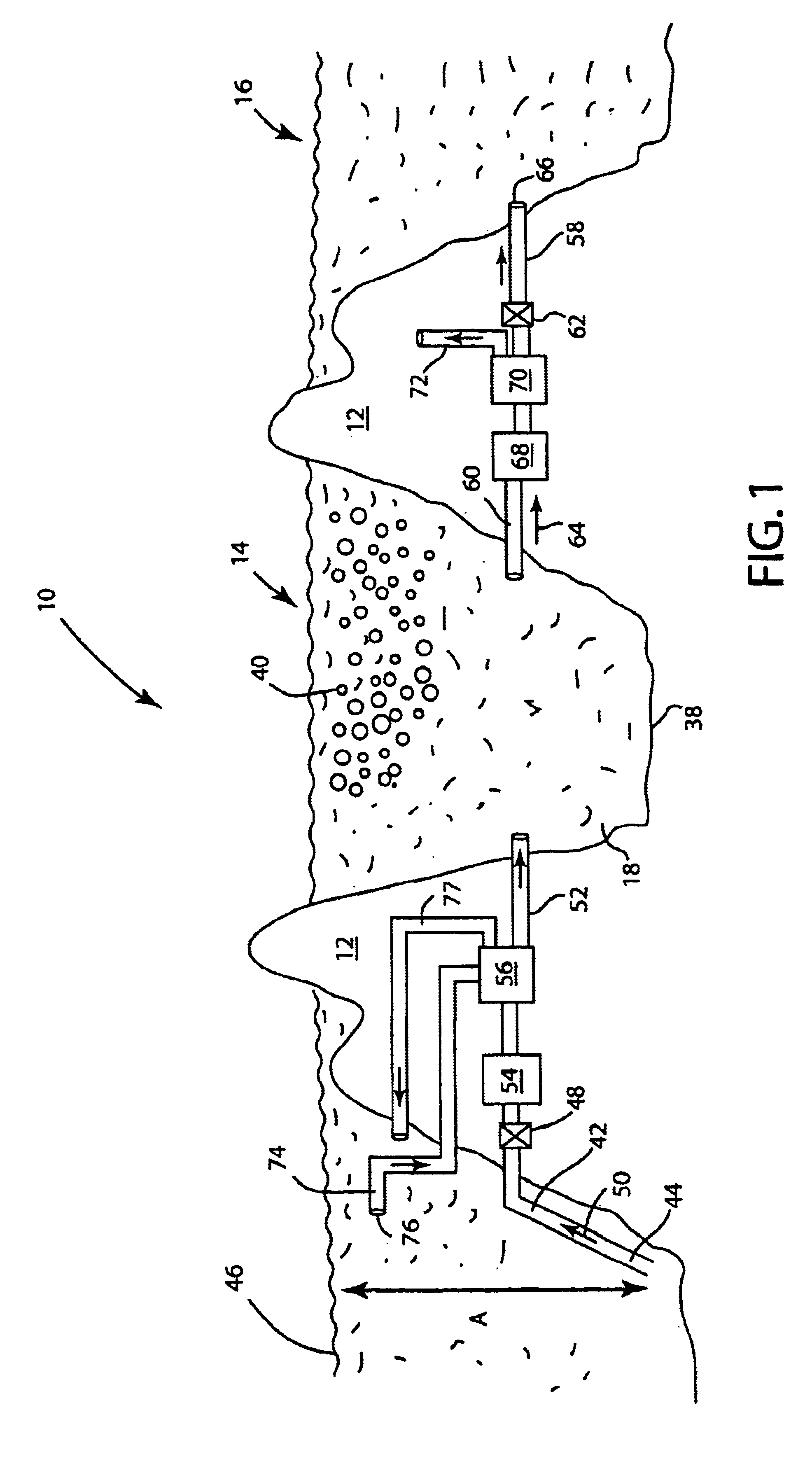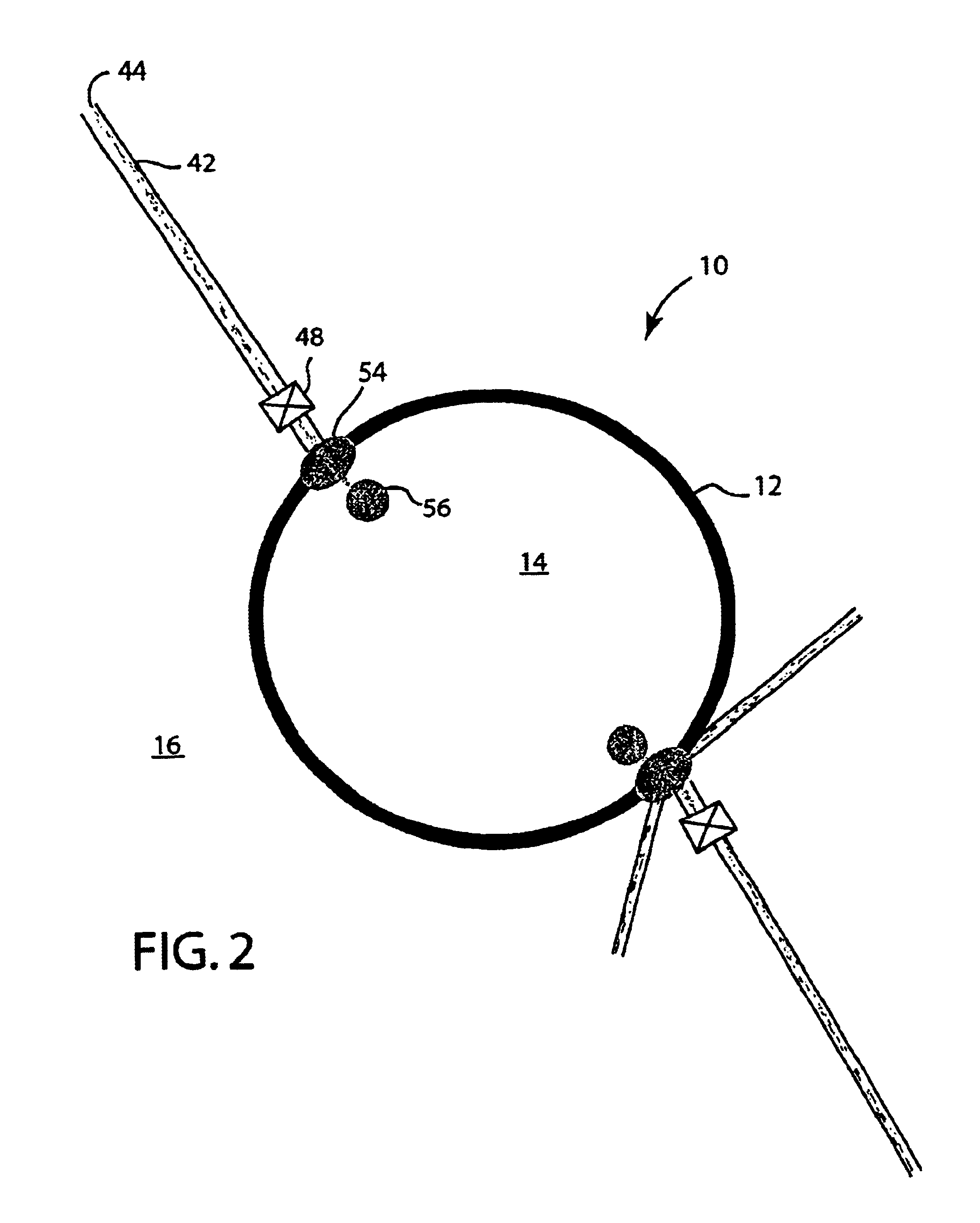Tidal irrigation and electrical system (TIES)
a technology of electrical system and irrigation system, which is applied in the field of tide irrigation and electrical system, can solve the problems of not coming up with an economically viable system, otec (ocean thermal energy conversion), and the world is suffering from a shortage of sustainable energy
- Summary
- Abstract
- Description
- Claims
- Application Information
AI Technical Summary
Benefits of technology
Problems solved by technology
Method used
Image
Examples
Embodiment Construction
Referring first to FIG. 1, thereshown is a atoll 10 that forms the basis of the present invention. As illustrated in FIG. 2, the atoll 10 is generally ring-shaped and defined by a continuous outer wall 12. The atoll 10 defines an inner lagoon 14 that is separated from the ocean 16 by the continuous outer wall 12. Because the inner lagoon 14 is separated from the surrounding ocean 16, the inner lagoon 14 includes an enclosed supply of lagoon water 18 whose level is unable to rise and fall with the rising and falling tides of the ocean 16 located to the exterior of the continuous outer wall 12.
In accordance with the present invention, the atoll 10 is artificially manufactured at or near the continental shelf and is thus away from coastal land masses whose coastal margins are presently the most utilized, expensive and endangered environments. However, the continental shelf is an under-utilized area that can be easily utilized without violating many currently in place international trea...
PUM
 Login to View More
Login to View More Abstract
Description
Claims
Application Information
 Login to View More
Login to View More - R&D
- Intellectual Property
- Life Sciences
- Materials
- Tech Scout
- Unparalleled Data Quality
- Higher Quality Content
- 60% Fewer Hallucinations
Browse by: Latest US Patents, China's latest patents, Technical Efficacy Thesaurus, Application Domain, Technology Topic, Popular Technical Reports.
© 2025 PatSnap. All rights reserved.Legal|Privacy policy|Modern Slavery Act Transparency Statement|Sitemap|About US| Contact US: help@patsnap.com



